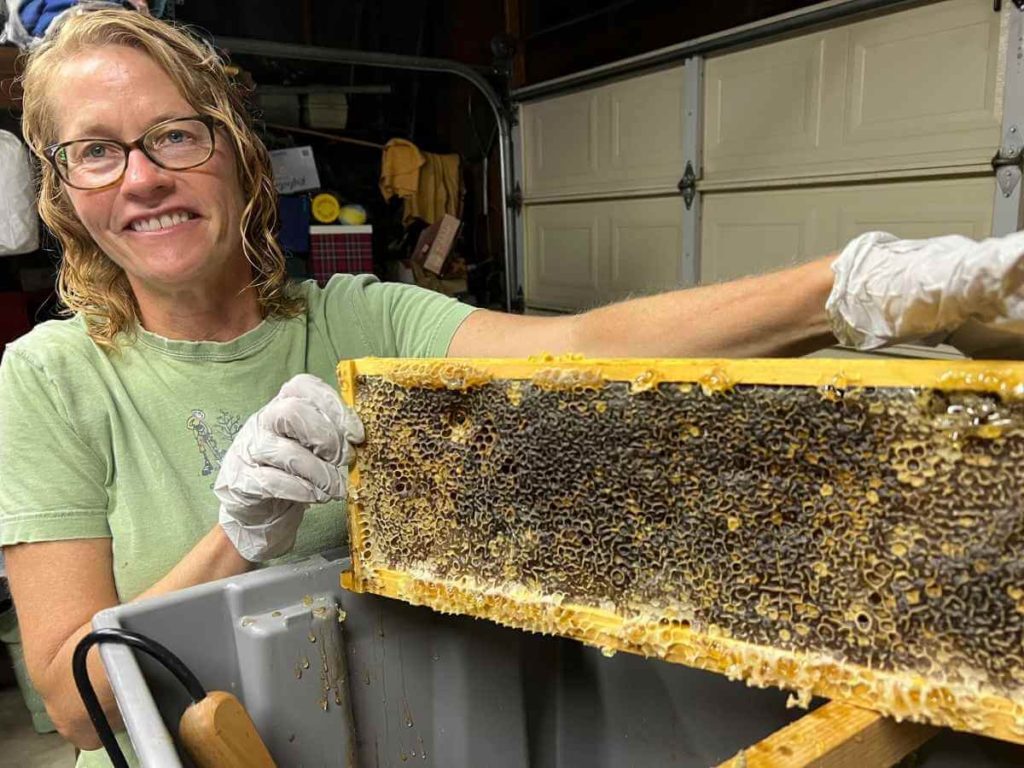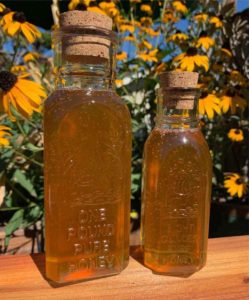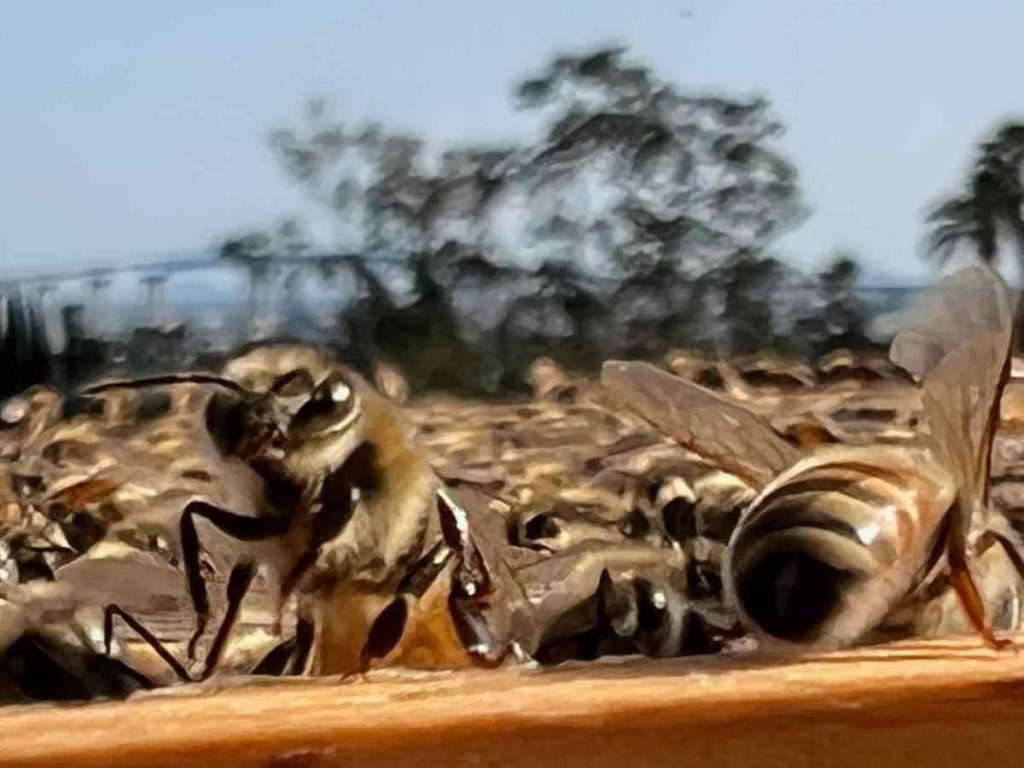This post was last updated on August 1st, 2022 at 12:12 pm
A city of 1.4 million people might not be the first place you’d expect to find beekeepers in action. But on the second-floor balcony of Judd and Victoria Curran’s home in San Diego, Calif., you’ll find two thriving colonies.
“Inside the beekeeping society world it’s no surprise. Outside of that, people are blown away. They can’t even believe it,” Judd said about raising bees just 2 miles from the downtown, in a neighborhood known as Golden Hill.
For Judd and Victoria, beekeeping is more than a passion. They’ve also made it into a business, called Happy Bee. They sell “artisan micro-batch raw honey,” as opposed to the large-batch pasteurized varieties commonly found in grocery stores.
Urban beekeeper priority No. 1: bee health
Judd doesn’t make maximizing honey production his top priority. Protecting bees is.
“We’re raising them for the benefit of our community, as an education effort, and to help honeybee health as a primary goal. Some of the practices that we do are going to be very different from what you’d get in an industrial honey production facility,” Judd said in an interview with Frugalmatic.
For one thing, Judd can monitor his bees from his home office by simply peeking out the balcony window. “There’s this hyper-awareness and attention that our bees get,” he noted.
While the setup is convenient, this is no casual enterprise. Judd and Victoria spent nearly a year researching beekeeping before starting hives. They attended bee society meetings and read several books on the topic. Beekeeping can be a rewarding, but aspiring beekeepers shouldn’t rush into the hobby, Judd advised.
Good reasons for regulations
There are many regulations designed to protect both people and bees. A hive setup must follow rules set at city, county, and state levels. Requirements can include replacing the queen every couple of years to ensure hives don’t take on Africanized bee traits, which make bees more aggressive.
“There is so much you need to know in order to be successful and have the greatest chance of the bees doing well, and you working well with the bees and not getting discouraged. And also making sure that the people in your neighborhood where you keep the bees are safe,” Judd explained.
If you do your homework and follow regulations, bees can do well in an urban environment. “The city of San Diego has pretty progressive regulations that allow people to have chickens in their backyard, bees, even a goat,” Judd added.
Another nice perk: better pollination
Even in a big city, there’s plenty of opportunity for bees to do their pollinating magic. The couple’s backyard passion fruit vine went from having only a few fruits each year to “now being completely loaded,” Judd said. Their neighbors experienced a similar effect after the bees’ arrival with their citrus and avocado trees.
“I feel like a big part of what we’re doing is educating the community about the importance of pollinators and all that they do for us. Honey is one small part of that,” Judd said.


Read more excerpts from my interview with Judd Curran below. Some responses have been edited for length and clarity.
Frugalmatic: How did you become interested in beekeeping?
Judd Curran: Victoria and I were celebrating our anniversary in Fort Bragg on the coast of northern California, an old lumber town. We went to the farmers market, and as we were walking through, we tried some local honey. It was really good. Then we happened to wander into a used book store. We were just browsing around, and Victoria showed me this backyard beekeeping book. It just looked super interesting, so we bought that. And on our little anniversary getaway, one of the things I did was read through this book. We read through it together, and we got really excited at the prospect of actually having bees in our backyard.
Check out more Frugalmatic interviews
F: What advice would you give someone interested in beekeeping?
JD: The first thing I would suggest is that if you can go at it from a mindset of helping bees, you’ll probably be more successful. If your goal is to get honey or wax or pollen or propolis, then it makes it really hard. Those should be secondary to helping honeybees. Then in the process, sometimes you’re rewarded with things like honey harvest, wax, and pollen.
Primarily, the first thing to do is to become educated and learn as much as you can. And do that before you get any bees. Give yourself six months or even a year to learn the ins and outs of beekeeping. You can connect with your local beekeeping society. Most large or urban areas in the United States have a beekeeping society nearby. There are a lot of resources online.
If you just throw yourself into it and get some bees and you think you’re going to figure it out later, it can become difficult. Sometimes situations pop up where you need to know what to do right in that moment. When they talk about colony collapse disorder and the loss of an abundance of pollinators and the challenges that honeybees have, it is very real. It is something that happens on all scales. Even if you’re a hobbyist, you have to be constantly vigilant about looking for different things that might be affecting their health.

F: What are some of your favorite ways to use the honey you harvest?
JD: Honestly, just putting a big dollop on your spoon and eating it the way it is. We like doing that.
We heard a recommendation from one of our doctors one time when we had a sore throat that honey was the best natural way to sooth a sore throat. So we tried that one time, and it really worked. Day to day, we like to pour it over homemade sourdough bread in the morning. That’s one of our favorite things.
We also use it when we make granola. It can be used of course as a substitute for any other sweetener, when you’re making cookies, muffins. It’s just going to have a little more water content than your dry sugars would have.

